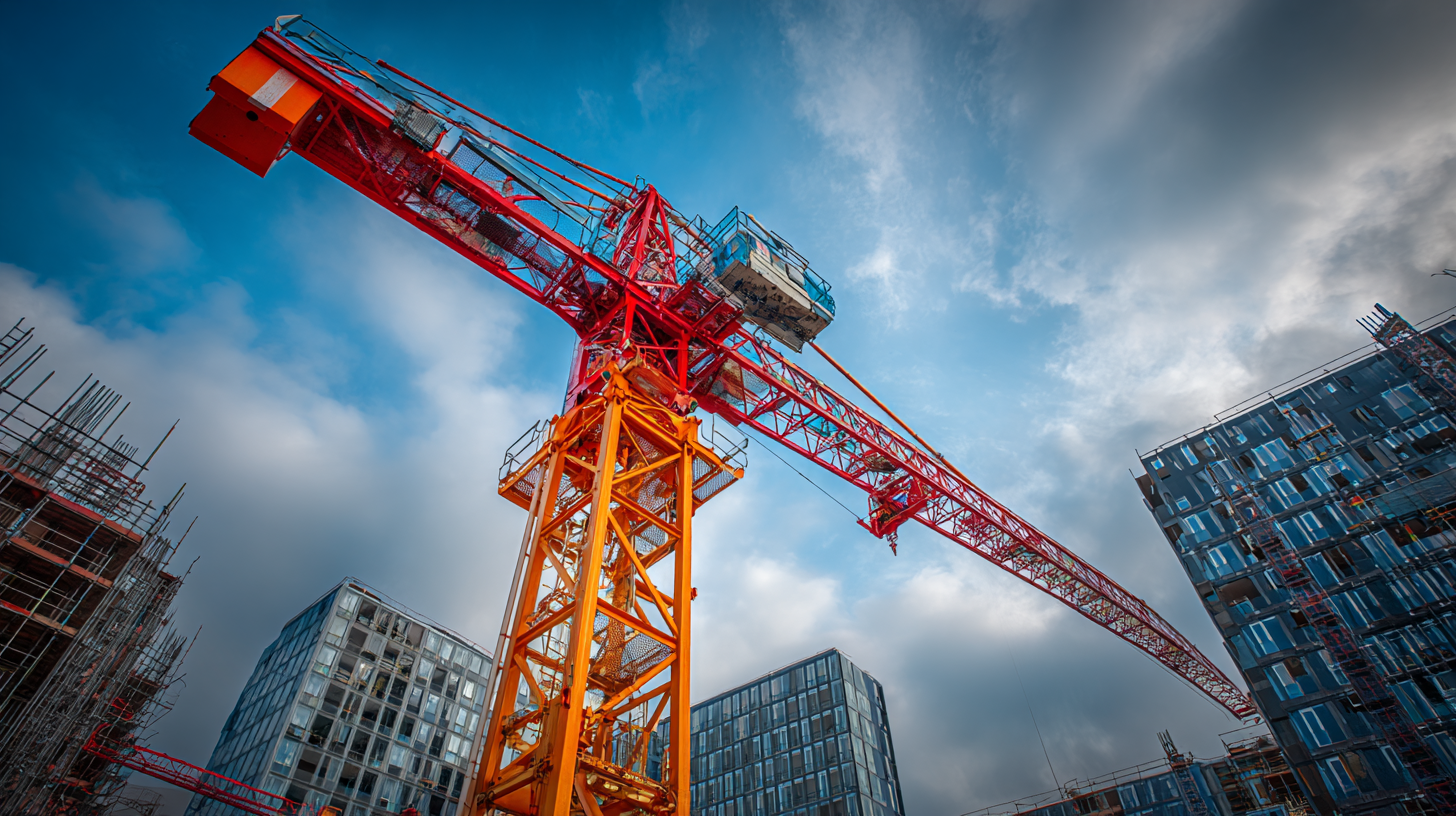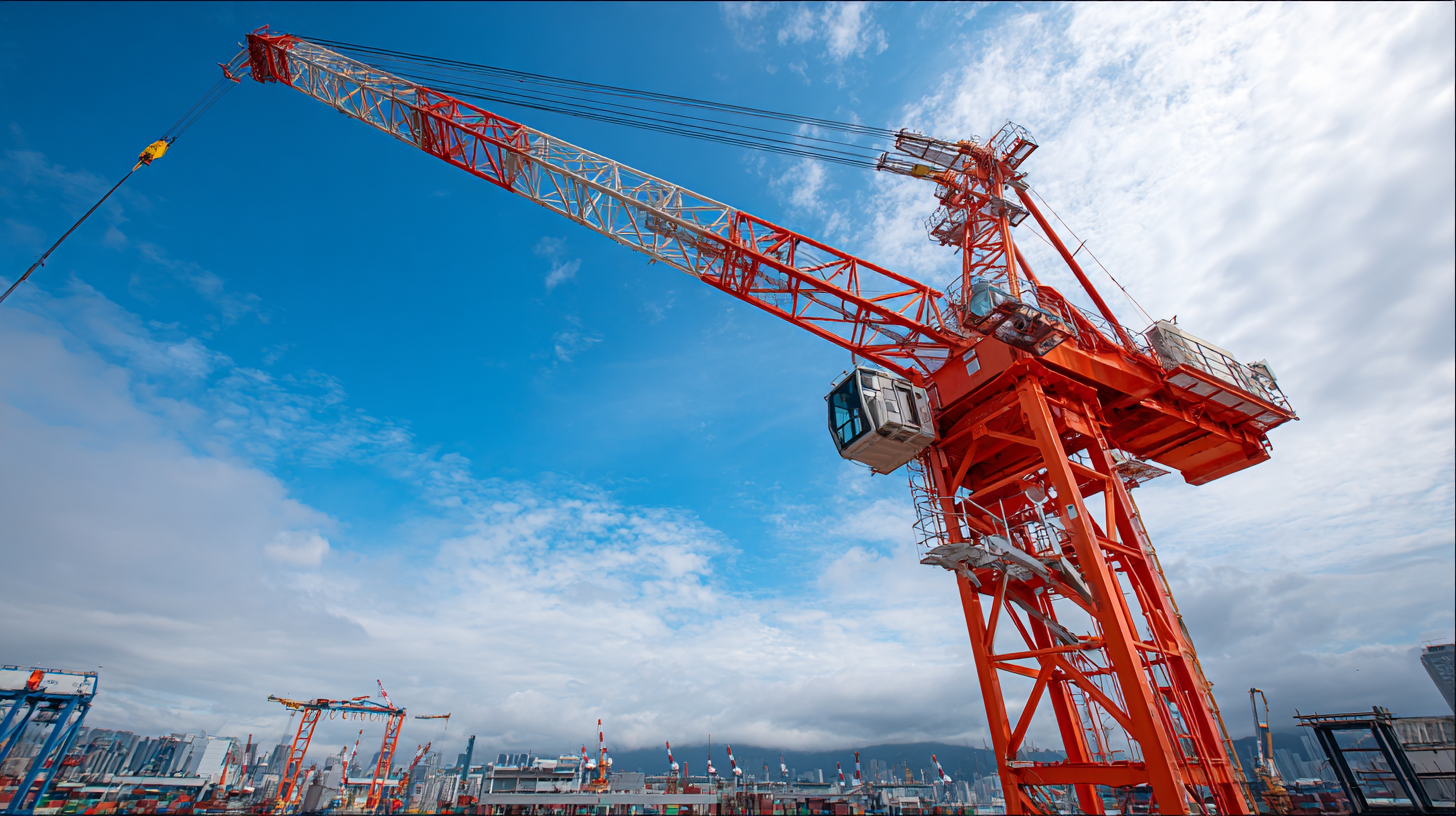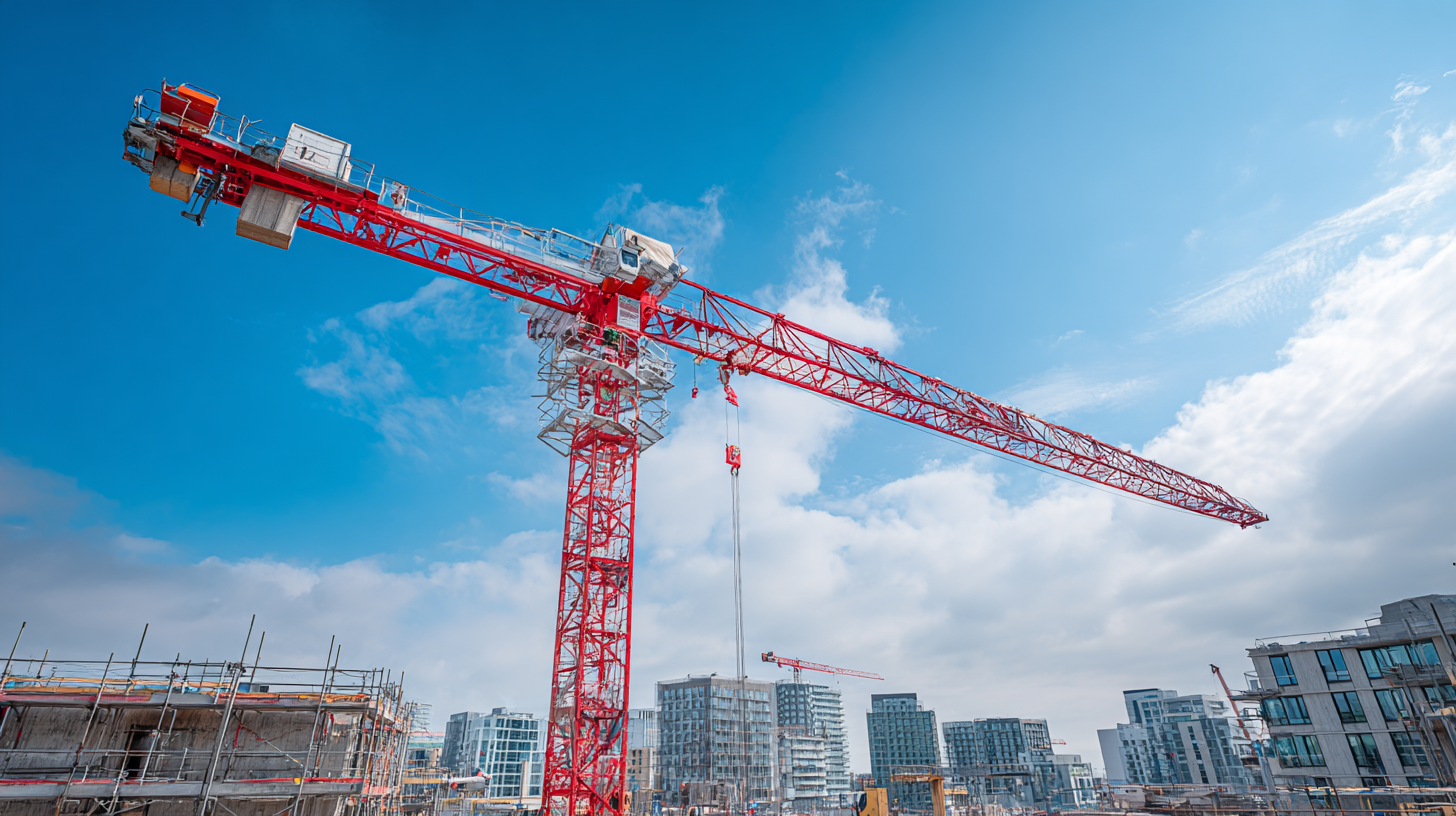 In the fast-evolving construction industry, the significance of Tower Cranes cannot be overstated, particularly in the context of China’s manufacturing prowess. According to a report by Research and Markets, the global tower crane market is expected to reach USD 5.98 billion by 2025, growing at a CAGR of 5.1%. This growth is largely driven by the increasing demand for infrastructure development and urbanization, with China leading the charge as a top manufacturer and exporter of these critical machines. Tower Cranes have become indispensable within the construction sector, known for their ability to lift heavy loads and reach impressive heights, making them suitable for high-rise buildings and large-scale projects. As global buyers seek out advanced technology and reliability, understanding the unique features and applications of various tower crane variants is essential for informed procurement decisions. This blog will delve into the best offerings available in the market, showcasing how Chinese manufacturers are playing a pivotal role in meeting worldwide demands.
In the fast-evolving construction industry, the significance of Tower Cranes cannot be overstated, particularly in the context of China’s manufacturing prowess. According to a report by Research and Markets, the global tower crane market is expected to reach USD 5.98 billion by 2025, growing at a CAGR of 5.1%. This growth is largely driven by the increasing demand for infrastructure development and urbanization, with China leading the charge as a top manufacturer and exporter of these critical machines. Tower Cranes have become indispensable within the construction sector, known for their ability to lift heavy loads and reach impressive heights, making them suitable for high-rise buildings and large-scale projects. As global buyers seek out advanced technology and reliability, understanding the unique features and applications of various tower crane variants is essential for informed procurement decisions. This blog will delve into the best offerings available in the market, showcasing how Chinese manufacturers are playing a pivotal role in meeting worldwide demands.
When it comes to modern construction, tower cranes are indispensable tools that dramatically enhance efficiency and safety on job sites. The key characteristics that set the best tower cranes apart include their lifting capacity, height reach, and versatility in various applications. High-quality tower cranes possess advanced hydraulic systems, which not only increase their load-lifting abilities but also ensure smoother operations. Their modular designs allow for easy transport and assembly, making them ideal for projects of varying scales, from urban high-rises to expansive infrastructure developments.
Another critical differentiator is the incorporation of cutting-edge technology, such as automated control systems and enhanced safety features. These innovations improve operator precision and reduce the risk of accidents, which is paramount in high-stakes environments. Furthermore, the best variants offer adaptable configurations with extendable jibs and customizable bases, providing greater flexibility based on site requirements. The exceptional engineering of these cranes enables them to operate efficiently in diverse environments, appealing to global buyers seeking reliable solutions for their construction needs.
| Crane Type | Max Lifting Capacity (ton) | Height (m) | Radius (m) | Application | Key Feature |
|---|---|---|---|---|---|
| Hammerhead Crane | 10 | 30 | 50 | High-rise Construction | Versatile Range |
| Luffing Jib Crane | 12 | 35 | 45 | Urban Construction | Space-Saving Design |
| Flat Top Crane | 8 | 25 | 40 | Residential Projects | Easy Assembly |
| Self-Erecting Crane | 6 | 20 | 30 | Small Sites | Compact Size |
In the realm of construction, selecting the right type of tower crane is pivotal for diverse projects. Tower cranes are categorized into various types such as hammerhead cranes, flat top cranes, luffing jib cranes, and self-erecting cranes, each offering unique advantages tailored to specific construction needs.
 Hammerhead cranes are known for their versatility and high lifting capacity, making them ideal for large-scale projects. Conversely, flat top cranes are favored for their ease of assembly and better aesthetics, often utilized in urban environments.
Hammerhead cranes are known for their versatility and high lifting capacity, making them ideal for large-scale projects. Conversely, flat top cranes are favored for their ease of assembly and better aesthetics, often utilized in urban environments.
Further analysis reveals that luffing jib cranes excel in tight job sites due to their ability to lift loads to significant heights without necessitating an extensive swing radius. Meanwhile, self-erecting cranes are perfect for smaller projects, boasting efficient deployment and operational flexibility. Understanding these distinctions is essential for global buyers seeking to maximize productivity and safety on construction sites, navigating the complexities of tower crane utilization effectively. Each type not only contributes to project efficiency but also plays a critical role in ensuring operational safety, particularly in congested or challenging environments.
In the rapidly evolving construction industry, modern tower cranes are becoming instrumental in improving efficiency and safety on job sites. Innovative technologies are integrated into contemporary tower crane designs, leading to significant enhancements that cater to the demands of global buyers. These advancements include advanced automation, smart control systems, and real-time monitoring, which enable operators to manage cranes with unprecedented precision and ease. The integration of IoT (Internet of Things) technologies allows for seamless communication between cranes and central management systems, ensuring optimal performance and reducing downtime.
Moreover, the application of lightweight materials and improved engineering designs in tower cranes not only enhances their lifting capacity but also increases mobility on construction sites. Energy-efficient power systems have also emerged, contributing to sustainable construction practices by minimizing environmental impact. With features like anti-collision systems and automated hoisting processes, modern tower cranes significantly improve safety standards, allowing for safer operations in complex urban environments. As construction projects continue to grow in scale and complexity, these innovative technologies solidify the importance of tower cranes as essential tools for builders worldwide.
The global tower crane market is set for substantial growth, with projections indicating a reach of USD 43.75 billion, driven primarily by the escalating demand for urban infrastructure projects. As urbanization continues to rise, the construction landscape is visibly transforming, with buildings reaching new heights rather than spreading horizontally. Buyers looking for the right tower crane for their projects must consider variants that cater to specific needs, such as load capacity, height, and operational efficiency.
With a notable increase in the tower crane rental market, expected to surge from USD 16.3 billion in 2024 to USD 22.1 billion by 2030, construction companies are leaning towards rentals to meet project demands cost-effectively. Key players in the industry are innovating to enhance safety and performance in modular integrated construction processes, addressing the unique challenges posed by such methods. As buyers evaluate their options, understanding these market trends and selecting the appropriate crane type is essential for ensuring project success and safety in this evolving construction environment.

Maximizing efficiency in construction sites demands the adept operation of tower cranes, which play a pivotal role in lifting heavy materials. According to a report by the International Construction Market Survey, the global tower crane market is projected to reach USD 3 billion by 2025, fueled by increasing infrastructure projects worldwide. To harness the full potential of these cranes, operators must adhere to best practices that enhance safety and productivity.
One essential practice is the regular maintenance and inspection of tower cranes. According to the Occupational Safety and Health Administration (OSHA), proper maintenance can prevent up to 90% of crane-related accidents. Additionally, operators should focus on precise load planning and communication. A survey conducted by the
Construction Industry Institutefound that effective communication during lifting operations can reduce potential mishaps by over 40%. Training programs that emphasize these skills can significantly improve the operational efficiency of tower cranes, making them indispensable tools for modern construction projects.


